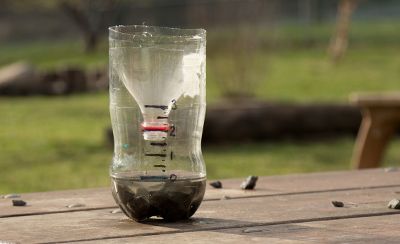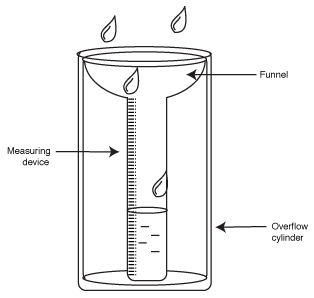Revealing the Scientific Research Behind Rain Assesses: Exactly How These Gadgets Play a Vital Function in Environment Research and Environmental Tracking
Rain assesses, apparently simple gadgets, hold a profound importance in the realm of environment study and ecological monitoring. As we peel back the layers of this scientific veil surrounding rainfall gauges, we reveal a globe where precision, information accuracy, and thorough observation assemble to unveil a much deeper understanding of our altering climate and its impact on the planet.
Relevance of Rainfall Gauges
Rain gauges play an important function in monitoring and determining precipitation degrees, supplying vital data for climate research and analysis. These tools are basic in quantifying the quantity of rains that happens in a certain location over a specific duration. By gauging and gathering rainwater, rain gauges deal important understandings into the circulation and intensity of rainfall, aiding meteorologists, hydrologists, and climatologists in recognizing weather condition patterns and trends.
Among the essential reasons rain evaluates are vital is their capability to provide accurate and local information. Unlike satellite or radar-based measurements, which use broader monitorings, rainfall assesses deal accurate details particular to the location where they are positioned. This localized information is vital for numerous applications, consisting of flooding projecting, dry spell monitoring, and water source administration. Additionally, long-lasting information collected from rain evaluates helps in assessing environment change impacts and patterns, contributing significantly to clinical research study and decision-making procedures. Fundamentally, rainfall gauges work as crucial tools in the field of weather forecasting and ecological science, playing an important function in progressing our understanding of weather condition and climate dynamics.
Kinds Of Rainfall Scales

Capability and Operation
In the realm of environment research and atmospheric studies, the performance of rain assesses hinge on their intricate performance and precise operational devices. Rain evaluates are developed to precisely gauge the quantity of precipitation that drops over a details area during a collection duration. These devices typically include a funnel that accumulates rainwater and networks it into a gauging tube. The measuring tube is marked with calibrated measurements that allow for the exact quantification of rainfall.
The performance of rain gauges is view website based upon the concept of gauging and accumulating rain in a standardized way. This collected data is critical for recognizing neighborhood weather patterns, tracking long-lasting climate fads, and assessing environmental impacts. To make sure exact dimensions, rainfall evaluates demand to be strategically placed in open areas far from blockages such as structures or trees that might hinder the collection process.
The functional facet of rain gauges entails normal maintenance to stop particles build-up, calibration checks to maintain measurement accuracy, and data recording for analysis (rain gauge). On the whole, the performance and procedure of rain evaluates are essential for gathering dependable precipitation data essential to environment research and environmental surveillance
Duty in Environment Study
Given the important relevance of accurate precipitation measurements in comprehending weather patterns and environmental effects, the function of rainfall evaluates click this in climate research is vital. Rain determines offer essential information for environment research by quantifying the amount of precipitation that falls over a certain area throughout a given period. This information is crucial for keeping track of lasting trends in rainfall patterns, examining the impact of environment modification on rainfall circulation, and enhancing environment versions.

Environment scientists use information accumulated from rainfall assesses to examine variations in rainfall degrees, identify regional climate fads, and assess the efficiency of water source monitoring approaches. By contrasting historical precipitation information with present measurements, researchers can spot changes in rainfall patterns, such as changes in the regularity or strength of rains events. This info is crucial for understanding how environment modification is affecting precipitation dynamics and can aid policymakers make educated decisions regarding adaptation and reduction approaches.
Applications in Environmental Surveillance

In flood forecasting, rainfall scale information aids to track rainfall intensity and distribution, permitting authorities to provide prompt cautions and take necessary procedures to reduce flooding threats (rain gauge). Drought tracking counts on rainfall scale information to analyze wetness degrees in the soil and track precipitation shortages, helping in the recognition of drought-prone locations and the execution of dry spell response strategies
In addition, rain scale information plays an important function in water resource management by offering details on water schedule and use fads. Furthermore, in farming, rainfall gauge data assists farmers in enhancing watering timetables, plant choice, and general farm administration methods based on regional precipitation patterns.
Conclusion
Finally, rainfall determines are crucial tools for measuring rainfall, providing useful information for climate study and ecological helpful resources tracking. With different types and capabilities, rain assesses play a vital role in recognizing precipitation patterns and their impact on the setting. By precisely determining rainfall, these gadgets add to the innovation of clinical knowledge and aid in making informed choices pertaining to water source administration and catastrophe readiness.
Rainfall determines play an indispensable function in monitoring and determining rainfall degrees, offering crucial information for climate study and analysis. The standard rain scale, recognized as the "tipping bucket" scale, is one of the most frequently utilized devices. Ultrasonic rain determines usage noise waves to identify the presence of rain, offering real-time data on precipitation levels.Environment scientists use data gathered from rain determines to evaluate variants in precipitation degrees, identify local environment patterns, and review the performance of water source monitoring approaches.In conclusion, rain assesses are important tools for gauging rainfall, giving valuable information for climate study and ecological tracking.